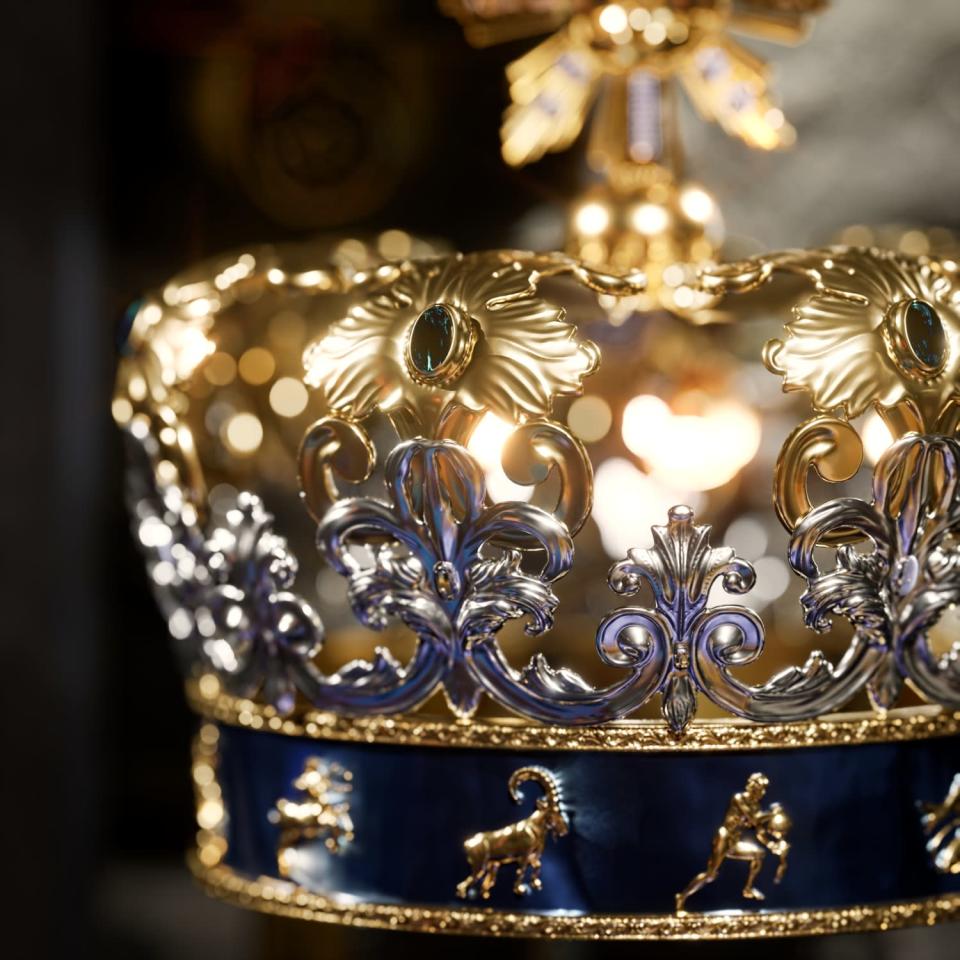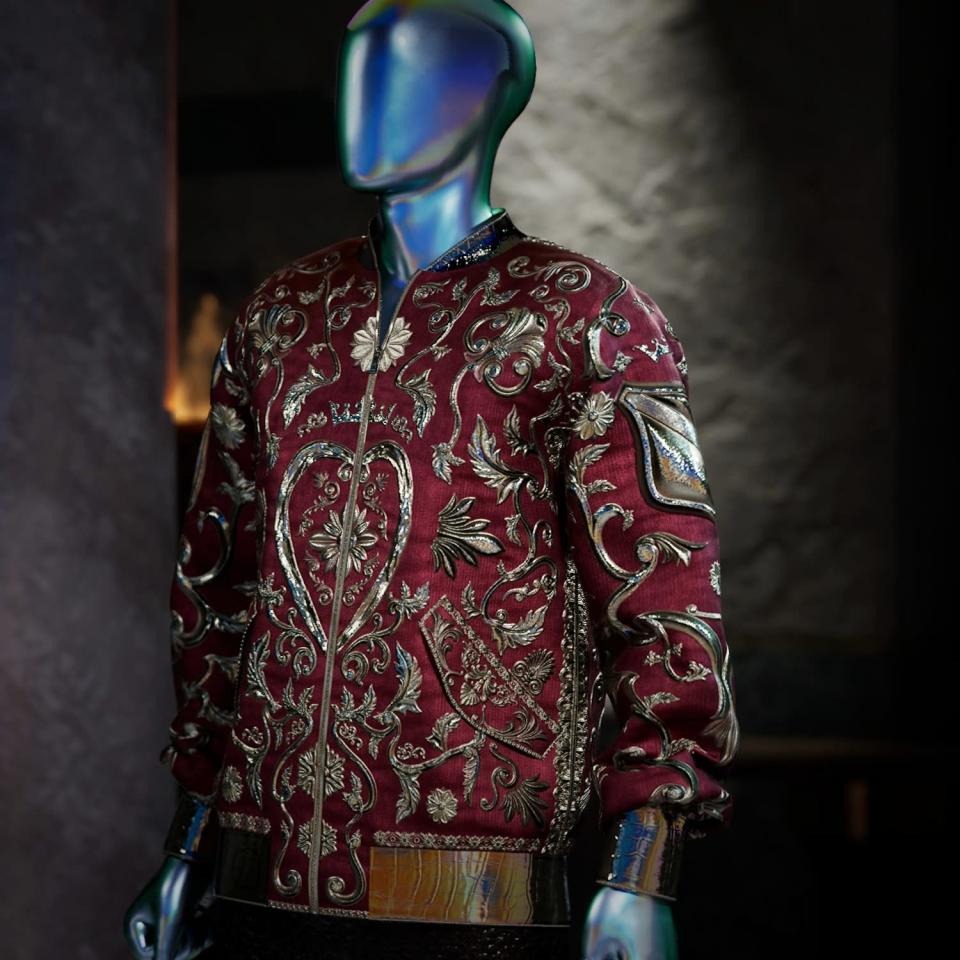WWDownload: Red Dao, on Dolce & Gabbana NFT and the Future of Digital Fashion

October may always be remembered as the month digital fashion truly took flight.
An auction for Dolce & Gabbana’s luxury fashion non-fungible tokens fetched $6 million this month, seemingly settling nerves that the digital bubble would burst anytime soon.
More from WWD
Within a year, the tech — a piece of data that can uniquely authenticate digital and physical goods — went from esoteric technobabble to blazing hot trend and made words like “crypto” and “blockchain” part of fashion’s lexicon.
Newly formed crypto group Red Dao won Dolce & Gabbana’s marquee NFT, “The Doge Crown,” as well as two purely digital “Impossible” jackets for a total of nearly $1.9 million. Alone, the crown auction, which included the digital 3D image and the actual physical item, sold for the equivalent of $1.27 million.

UNXD/Courtesy photo
According to Megan Kaspar, Red Dao member and managing director of crypto investment firm Magnetic, the sale was a key milestone for the group, as well as the fashion sector. Understanding the rationale behind it has everything to do with who the group is and what its goals are.
The members of Red Dao, a “decentralized autonomous organization” formed of some 40 people from the crypto and fashion industries, banded together with the goal of amassing and driving premium digital apparel through NFTs. The D&G sale was the group’s first purchase.
“Red Dao is specifically looking at investing in the future of fashion technology, which for us, is NFT digital fashion,” explained Kaspar. “We believe that digital fashion can only be monetized through blockchain technology [as it] uses the intelligence layer on a blockchain, which are smart contracts.”
NFTs are recorded in the blockchain, an essentially immutable decentralized ledger that can’t be copied or hacked. It works like a certificate of authenticity, which is profound for endlessly rippable digital goods.
The organization had only just formed when it got wind of the benchmark-setting fashion auction. It made for ideal timing, as members excitedly considered the digital fashion drop.
Of course, other NFTs have driven millions of dollars in sales prior to this — from the $69 million Beeple digital collage that set off the latest craze to an RTFKT digital sneaker that sold for $3.1 million and projects from brands like Rebecca Minkoff, who launched her own NFTs for fashion photos depicting her New York Fashion Week collection in September.
But the Dolce & Gabbana auction was different, in Red Dao’s point of view.
“For us, this was the first public signal to society [that was] sort of indicating to the world that there’s an emerging opportunity in NFT fashion that has never existed before,” Kaspar continued. “We had one of the world’s largest designers launch a Genesis couture collection, selling over $5 million worth of items, and we bought three of those items. It’s interesting because it shows the world what is possible with these new business models.”
She noted that apart from the jewel-encrusted Doge Crown, which comes in both virtual and physical forms, the group bought two digital-only jackets that come with exclusive brand experiences.

UNXD/Courtesy photo

UNXD/Courtesy photo
“There are four different experiences for the next two years that Red Dao members can participate in, some of them extremely exclusive events and parties that Dolce & Gabbana hosts,” she said. “Your brain could take you into different ideas of how brands could utilize that function.” That leads Kaspar to see the sale as a watershed moment capable of opening up new paths for fashion and luxury.
As for the fundamental question of what people can actually do with virtual tiaras, jackets, earrings, outfits or shoes — apart from admiring them or sharing images on social media — the crypto expert has a few ideas.
She pointed to a recent interview with Yahoo Finance, in which she projected that the fashion industry’s $2 trillion value will double over the next two decades because of digital fashion. She was wearing various virtual accessories during the segment.
The example points to the inescapable scenario that people are simply living more of their lives online, especially in these recent pandemic-driven times. Imagine consumers wearing authentic Dolce & Gabbana or Gucci creations online in video calls or virtual red carpets, or outfitting gaming avatars with luxury goods, authenticated via NFT.
That just scratches the surface. As other forms of technology emerge, so will new uses for NFTs and digital fashion, Kaspar said.
Karinna Nobbs, cofounder of digital fashion marketplace The Dematerialised, agrees. She looks to projects that blend augmented reality and digital fashion, like Carlings’ AR T-shirt — a blank top that populates with digital imagery when a user points their smartphone camera at it.
“[I think] we will see some elements of physical fashion becoming almost a bit more uniform, a little bit more basic, particularly with the advent of AR glasses, for example,” she told WWD in April.
Kaspar, too, believes AR-equipped eyewear will be the next major milestone for digital fashion when — not if — they emerge. Facebook has broadcasted its intention to launch AR glasses at some point, likely 2023. Meanwhile, the tech sector eagerly anticipates a similar device from Apple.
“I would also anticipate seeing something from Amazon as well,” Kaspar added. “Amazon is an incredible company. They’re just amazing how dynamic and nimble, they’re able to just move and be flexible. And they don’t talk about it. They just do it.”
It will be at least a few years, if not longer, for such devices to hit the consumer market, much less gain traction, she acknowledged. But that only means the fashion industry has work to do in the meantime, to prepare — not just for these particular gadgets, but other new technologies that are coming up.
“There’s a chip from a company called Ostendo that’s a quantum photonic imager chip. No one else has anything like it. They’ve been working on it for 16 years, and it’s incredible,” she said.
Ostendo’s work effectively embeds numerous miniature projectors around the glasses, which can project 3D or even holographic images, layered over a person’s view. It’s a much more immersive and realistic AR experience than pointing a phone and staring at its screen.
That future may seem far off, and it is, but for Red Dao, it looks like an inevitability.
Until then, there are other matters to attend to.
For its next NFT, the group is eyeing an upcoming work from Iris van Herpen based on her dress from the Met Gala. It is also weighing different offers for its latest purchase, as celebrities and influencers come out of the woodwork, with hopes of donning The Doge Crown, whether in physical or digital form. There’s speculation that Snoop Dogg, for instance, wants to wear the crown.
“There is speculation that he will do that,” admitted Kaspar. “I think his team is super progressive. You know, Snoop has his own metaverse world and sandbox called Snoop Mansion. And I think that there’s a really good alignment there. But there may be other celebrities that would be a better fit. So it comes down to partnership alignment, and then also what the Dao votes on.”
Sign up for WWD's Newsletter. For the latest news, follow us on Twitter, Facebook, and Instagram.

 Yahoo Movies
Yahoo Movies 